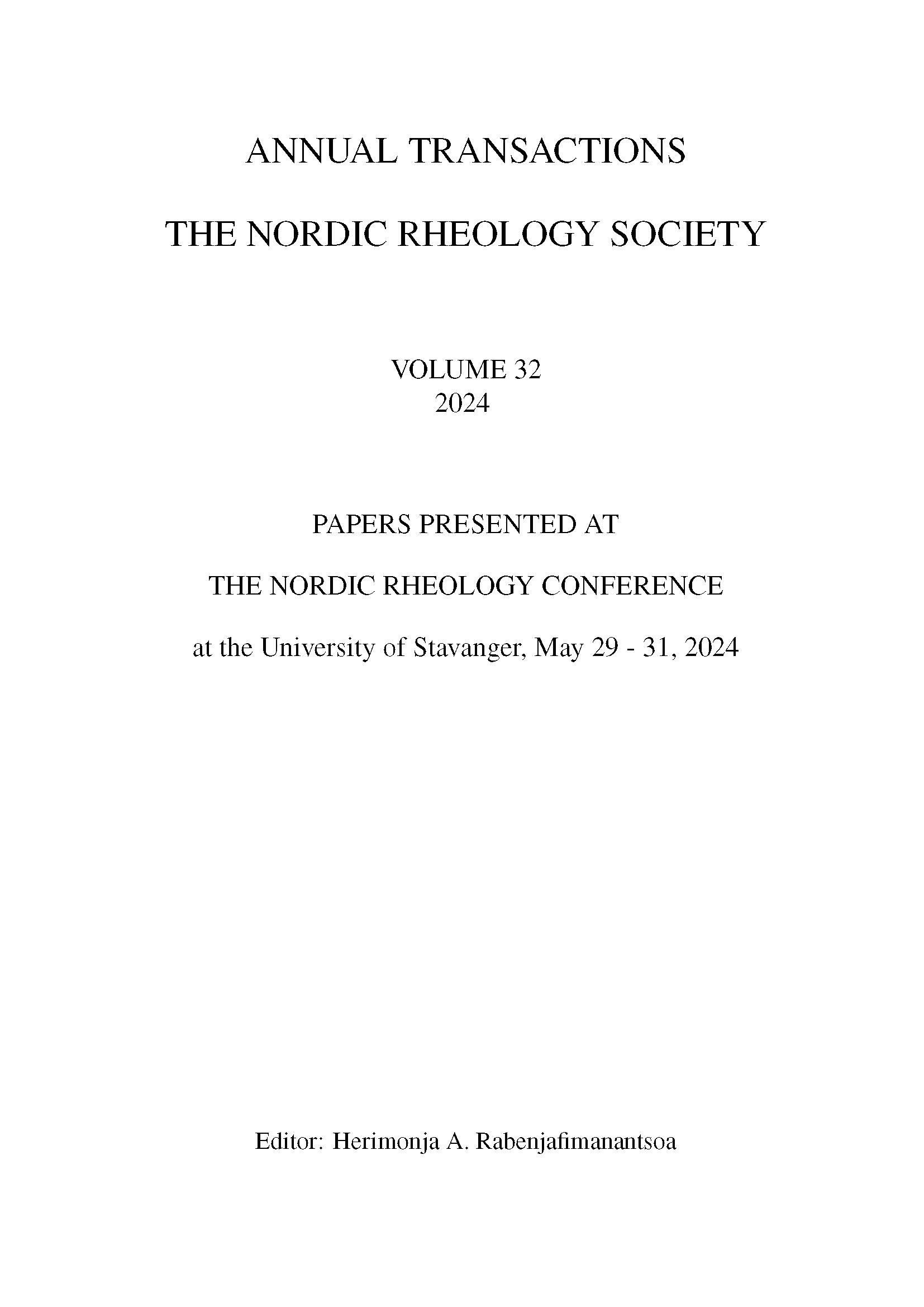Hydrogel-Based Artificial Blood as a Lubricant in Bio-Tribological Model System Testing
DOI:
https://doi.org/10.31265/atnrs.769Abstract
Understanding the tribological behavior of blood-lubricated interfaces is considered relevant for the design of heart pumps, heart valves or for the understanding of the blood flow in very narrow blood vessels. Tribological studies with real biological materials are challenging, e.g., due to their limited stability or potential risk of infections. To overcome these challenges, artificial materials are used in this study to mimic real blood and the biological interfaces. As
for the lubricant, a hydrogel-based artificial blood with a glycerol-water solution, as a continuous phase, is used. Various compositions of artificial blood are investigated and compared with real plasma as well as platelet-rich plasma as lubricants. Soft biological interfaces are represented by a glass-ball-on-three-elastomeric pins setup. Results from tribological model system measurements on the different lubricants are shown in the form of Stribeck curves and possible lubricating mechanisms are discussed. Results from complementary shear rheological measurements of the blood fluids are shown and discussed.
References
Zhang, J.; Johnson, P.C. and Popel, A.S. Effects of Erytrhocyte Deformability and Aggregation on the Cell Fee Layer and Apparent Viscosity of Microscopic Blood Flows. Microvacular Research. 2009.
https://doi.org/10.1016/j.mvr.2009.01.010
Popel, A.S. and Johnson, P.C. Microcirculation and Hemorheology. Annual Revue of Fluid Mechanics. 2005.
https://doi.org/10.1146/annurev.fluid.37.042604.133933
Mc Chedlisvili, G. and Madeda, N. Blood Flow Structure Related to Red Cell Flow: A Determinant of Blood Fluidity in Narrow Microvessels. Japanese Journal of Physiology. 2001.
https://doi.org/10.2170/jjphysiol.51.19
Secomb, T.W. Tribological Phenomena in Blood Vessels. In: Wang, Q.J., Chung, YW. (eds) Encyclopedia of Tribology. Springer, Boston, MA. https://doi.org/10.1007/978-0-387-928975_1271. 2013
https://doi.org/10.1007/978-0-387-92897-5_1271
Xie, D., Leng, Y. X., Jing, F. J., & Huang, N. A brief review of bio-tribology in cardiovascular devices. Biosurface and Biotribology, 1(4), 249-262. 2015
https://doi.org/10.1016/j.bsbt.2015.11.002
Rummel, F; Tietz, M; Marsh, S. Tribological Characterization of Cocoa Mass with Different Rheological Properties and Particle Size Distribution. Annual Transactions of the Nordic Rheology Societey.2023.
Pondicherry, K.S.; Rummel, F.; Läuger, J. Extended Stribeck Curves for Food Samples. Biosurface and Biotribology. 2018.
https://doi.org/10.1049/bsbt.2018.0003
Pape, F.; Poll, G. Investigations on graphene platelets as dry lubricant and as grease additive for sliding contacts and rolling bearing application. Lubricants 2020, 8, 3.
https://doi.org/10.3390/lubricants8010003
Rudge R.E.D; van den Sande, J.P.M.; Dijksman J.A. et al. Uncovering Friction Dynamics Using Hydrogel Particles as Soft Ball Bearings, Soft Matter, 2020.

Downloads
Published
Issue
Section
License
Copyright (c) 2024 Florian Pape, Gesine Hentschel, Belal Nassef, Florian Rummel, Sabrina Küspert, Ligia de Souza, Christina Winkler, Birgit Glasmacher

This work is licensed under a Creative Commons Attribution 4.0 International License.
